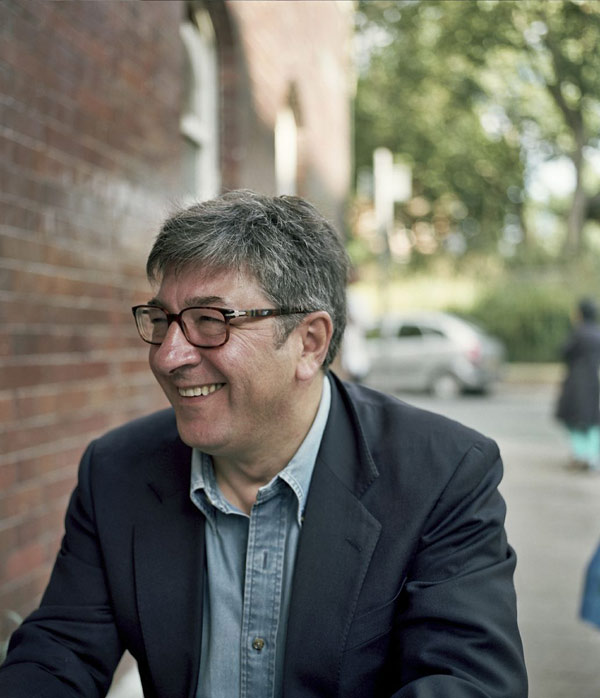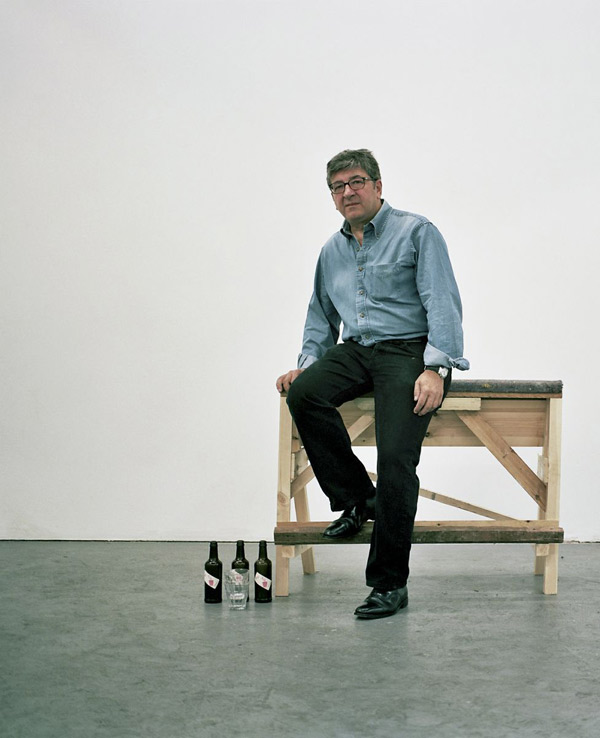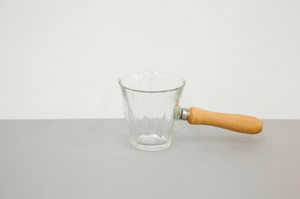From hosting designers at the Salone del Mobile to their iconic glasses, Bar Basso is at the heart of Italian design — through owner Maurizio Stochetto it was briefly at the heart of London Design Festival too

Bar Basso is something of an institution in Milan, where during the Salone del Mobile it plays host to the leading names from the contemporary design world. Owner, Maurizio Stochetto was in the UK last week for London Design Festival, lending his family’s legendary bar skills to Bar Alto, the travelling pop-up bar venture inspired by its Milanese cousin, and organised by Jerome Rigaud and Alex Bettler of DesignMarketo.
Betty Wood caught up with Maurizio at Bar Alto to discuss the collaboration, and the history of his famous establishment.
How did Bar Alto come about, and how did you personally become involved in the project?
Two years ago during the furniture fair, I was talking to Harry Thaler who said he’d like to do something with friends for London Design Week. A few weeks later, I received an email from Alex Bettler (DesignMarketo) who told me about the project of having a bar space in London during the festival. He aimed to recapture the spirit you find in Basso during the fair.
“Cocktails are the product of American culture and after the war,
as far as tourism was concerned, only the Americans had the means to go to the most expensive hotels and bars”
Bar Basso’s become a gathering , especially for designers. You’ll find the most important designers there, but when they are, they usually speak of everything but design! I was flattered by the fact they wanted me to take care of the bar.
Actually, ‘Alto’ it’s a pun because my establishment is called Bar Basso, which means ‘low’ whilst ‘alto’ means high. When Alex suggested it, I wasn’t sure many people would get the pun, but it worked out.
It’s probably fair to say that Bar Basso is one of the most famous saloons in Milan, particularly within the creative community. How was it established?
My father worked in Cortina. At the end of the 40s, he decided to learn how to make cocktails, because that’s where the business was. Until the 60s in Italy, cocktails were not popular except in certain areas like Venice, Capri or Cortina because cocktails are the product of American culture and after the war, as far as tourism was concerned, only the Americans had the means to go to the most expensive hotels and bars [in these places]. He spent 20 years, there and it was an amazing time because Italy started changing; there was the rebuilding of the country and la dolce vita. Hemingway spent 5 years between Cortina and Venice, and was a guest at the hotel . So were Richard Burton and Liz Taylor, Frank Sinatra and Ava Gardener.
In 1967 he decided to open a place of his own and wanted to go to Venice but heard through the grapevine that Bar Basso in Milano was for sale. My father bought it and came to the city, but Milano was not like Cortina or Venice… Nobody knew about cocktails!
“They became interested in the story of how we made the glasses, and the specifics of our . They considered it ‘living design’”
Apart from its legendary Negroni Sbagliato, Bar Basso is also famous for its glassware, a theme that’s carried over at Bar Alto with its specially commissioned glassware. Is there a story behind them?
, there was a problem in finding bar tools and glasses , because they were not popular in Milano. So, through a Venetian friend who owned a glass factory, [my father] started to design his own glasses to get them functional for the purpose of serving cocktails. When these wine glasses were made, the waiters complained that the base of the glass was too small, that it wasn’t stable. So with the next order, they had larger bases. Every time, on each take, they made a slight change, just to get the function correct. [Of course] they had to be nice to look at!
The glasses attracted the attention of the design community didn’t they?
in the late 60s. 25 years later, around the end of the 90s, lots of glass companies became interested in cocktails and wanted to design cocktail glass collections. Most of the designers hired were part of the group who came to my bar, Jasper Morrison, James Irvine, Ross Lovegrove…

“We designed a mould, and now we get our ice again, without losing our fingers!”
They all became interested in the story of how we made the glasses and the specifics of our . They considered it ‘living design’.
We also have a huge glass; [25 years ago out] ice cubes were as big as two packs of cigarettes put together. In those days, ice-making machines did not exist. Bar tenders, fishmongers etc all used to get their ice from icehouses. We used to buy these huge big blocks of ice, which we’d take down to the cellars to be sawn by a machine; we’d chop it in two, then two again…
The icehouses closed down, so we stopped having these big ice cubes until 2002, when I was telling the story to a designer friend of mine, who said ‘why don’t we make a mould and try and recapture the spirit of the ice cube?’ So we designed a mould, and now we get our ice again, without losing our fingers!
How did the Negroni Sbagliato or ‘wrong negroni’ come about?
In 1968, the counter culture movement kicked in and things really started to change. Until the mid-60s women did not feel much at home in the bar. ladies started to come to Bar Basso. more sophisticated than the men, so we developed different cocktails using sparkling wine.
Being Venetian, the Bellini was already popular. So my father developed a version of the Bellini using vodka. He made a Rossini with strawberries. He started to make quite a few cocktails that were less alcoholic but very tasteful. But that was long before the word sparkling was invented in the bar business and so we had lot cocktails come to the bar, and amongst them was the Negroni. He made a twist to it by using sparkling wine instead of the gin. But it’s a legend…
“Usually when we pick a name , we try to find one that recaptures the event that created it”

A legend? Is it true he ‘accidentally’ used sparking wine instead of gin?
It’s partly true — I never really knew how true. My father started to use sparkling wine because, being Venetian, the Spritz was a popular drink. Now it is very common but back then, nobody knew about it if you were from outside of Venice.
Anyway, the story we always tell about the Sblagiato is that my father was making a Negroni one day; he got a glass with the ice and the slice of orange, and he got the bottle of Campari and he poured the vermouth. When he started to pour the gin, somebody has switched the bottles so he’d grabbed a bottle of sparkling wine instead. He was going to change the bottle, but the customer insisted. So my father poured the wine and realised right away that the concoction made sense.
Usually when we pick a name, we try to find one that recaptures the event that created it; in this case it was the fact the bottle was taken by mistake, so we call this one the Negroni Sbagliato… which means “mistaken Negroni”.
Photography Jasper Fry
Bar Alto has now closed its doors for London Design Festival; you can find out more about DesignMarketo by visiting their website. Visit Bar Basso via Plinio 39 – 20129 Milano




